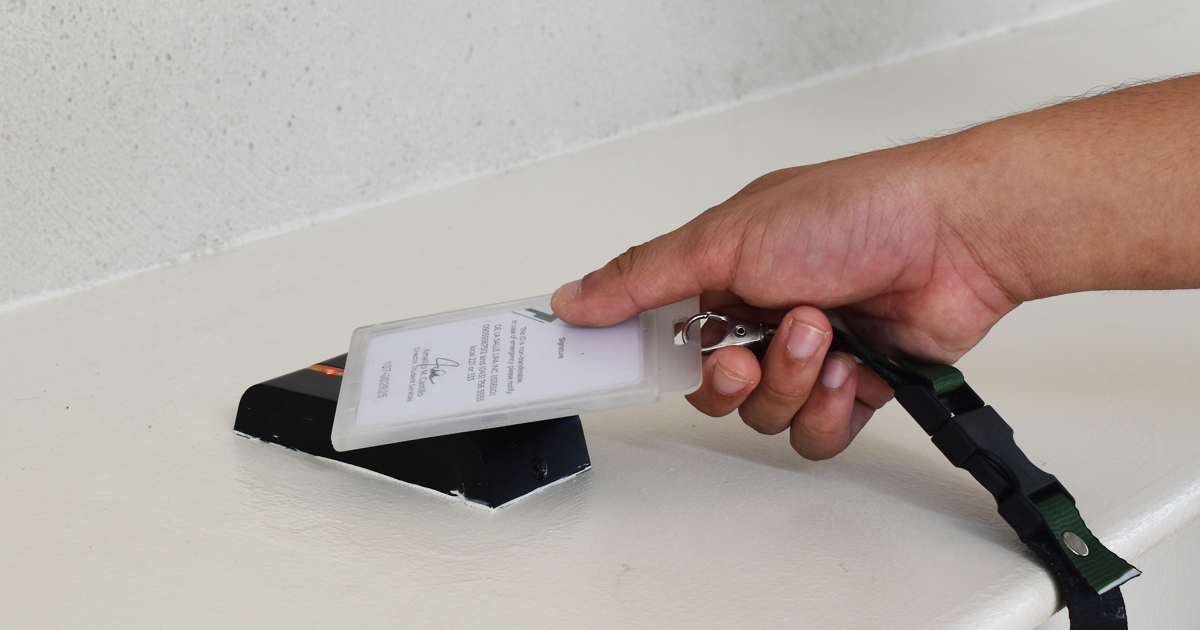
In an exclusive dry-run seminar for college student leaders and PENCIL (Parents Educators Nurturing Cooperation and Integrity La Salle Lipa) members, Engr. Imelda Martin, director of Information Communications and Technology Center (ICTC), announced that the first three features of the new Next+ ID shall be accessible to students and faculty at the beginning of the next academic year, May 9.
According to Martin, the new smart ID will allow students to be monitored by the security upon entrance and exit in campus, utilize cashless transactions in select concessionaires within the school and access other new digital platform services of the Institutional Health Services (IHS) and the Learning Resource Center (LRC).

Ingress-Egress
Martin also said that the initial implementation of the ingress-egress (entrance-exit) monitoring of the smart IDs shall only be focused on the overall perimeter of the campus covering the main entrance and exit points such as the College Lobby, CBEAM gate, Side gate and the Hall of Lasallian Saints.
“There are already installed readers around the main gates of the campus based on the data provided by the ISESSO on the density of students entering. We made sure na nilampasan pa namin kung ilan talaga ang kailangan,” Martin said.
The ICTC Director also clarified that there are turnstiles to be installed, saying, “Hindi na namin inantay ang turnstiles [before testing]… Ito na rin [installed readers] ang gagamitin for operating them.”
For the full implementation of the ingress-egress capability, Martin said that more readers will be installed for the other places inside the campus including building entrances and exits.

When asked about how the actual operation would monitor the large amount of students entering the gates of the campus in the rush morning hours, Martin replied that the actual implementation itself shall adapt to the situation.
“We’ll see what exactly is needed. That’s why we are conducting this seminar so that we can ask the cooperation of the student leaders to communicate with us on what is best for our students,” Martin said.

Other features
Engr. Martin also reminded the students to fully accomplish the online enrolment of students’ account through Vmoney which will be necessary in the upcoming implementation of cashless transactions around campus, emphasizing that all students must comply with it.
“This [cashless mode of payment] is not optional. Ang optional ay ang ibang features,” Martin said.
Martin then reiterated that they are geared to having total cashless transactions in the future.
In the seminar, it was also presented that payment for the purchases around campus shall be done through online and on-site loading and tapping of the Next+ Card to the merchants’ device powered by the Vmoney app.


